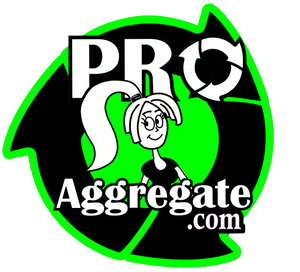Topsoil, Blended Soils, Screened Soil, Dirt, and Fill Dirt: What's the Difference?
- Planting Grass? The first thing to understand is that no soil will be free of rocks; rocks and dirt naturally go together. If you want a rock-free lawn or garden soil, be prepared to do some raking and screening yourself. However, starting with a quality blended soil can make this process so much easier. Blended soils typically combine screened soil with compost, which adds essential nutrients and helps retain moisture. At PRO Aggregate, we offer several blended soil options to support healthy grass growth and simplify your project.
- What is used for Gardens and Raised Beds? For garden and raised beds, we recommend using Garden Blend soil. This soil has already undergone the first step of removing unwanted roots, rocks, dirt clumps, and other debris. However, gardeners should plan to further work the soil themselves to clear any remaining rocks and clumps, especially screened soils can form clumps after a wet winter. Gardening is as much about nurturing and caring for your soil as it is for your plants. We prepare quality soil as the foundation, but the final preparation happens with you, after delivery.
- What is Topsoil and Screened Soil? Technically, topsoil refers to the uppermost layer of soil, but the term is often used more broadly to describe a variety of materials that may not have originally been topsoil. Screening is a process used to create topsoil-like materials. During screening, soil is moved by conveyor belts over a mesh screen with specific-sized holes. Particles larger than the holes are separated out and sent to a different pile, while smaller particles pass through to form a pile of screened soil. Since this is a mechanical process, sometimes large pieces can accidentally fall into the screened soil pile, so it's not uncommon to find some large rocks mixed in with screened soil.
- What is Fill Dirt used for? Fill Dirt is often made up of unscreened topsoil or subsoil. It's primarily used for filling holes, building up low areas, landscape leveling, or supporting retaining walls. It's not intended for planting, as it typically lacks nutrients and may contain rocks or clumps. If your project involved planting grass, trees, or shrubs, it's best to apply a higher-quality soil, such as screened topsoil or a blended garden mix, over the fill dirt to create a healthier growing environment.
- Where does the dirt come from? At PRO Aggregate, we source our dirt from local construction and excavation sites, including pool digs, basements, and commercial developments. Rather than letting this material go to waste, we recycle it into usable soil products. We maintain strict standards on the materials we accept to ensure nothing contaminated makes it into our supply. Much of the topsoil we process comes from deep, undisturbed layers of earth, making it a great base for various landscaping needs.
- Soil vs Dirt. Soil contains a high level of organic materials, which can accumulate naturally over time as leaves, roots, and other plant matter decompose into the upper layer of the earth. It can also be enhanced through blending screened soils with organic compost, creating a nutrient-rich medium ideal for plant growth. Dirt, on the other hand, usually refers to subsoil or earth from areas without plant life. It lacks organic content and structure, making it less suitable for gardening or landscaping without amendment.
- Why is there sometimes debris in the material? Occasionally, small amounts of debris may be found in soil materials. This typically originates from the construction or excavation site where the material was sourced, not from our PRO Aggregate facility. While we take great care in screening and processing thousands of tons of material, and we maintain strict quality control standards, some debris may occasionally make it into the final product. We are always working to provide the best quality materials possible, and appreciate your understanding in the rare instances when something slips through.
Depending on your land and specific project, it's important to make an informed decision when choosing between different soil or dirt types. For example, sand is often added to heavy clay soils to improve drainage, while clay can be mixed into sandy soils to help retain moisture. Regardless of your soil type, the key to supporting healthy plant life is to always incorporate a nutrient-rich compost or blended soil. This ensures your soil has the structure, moisture balance, and nutrients needed for strong root development and long-term plant health.
Soil Product Images

Raking Rocks From Blended Soil

Grade C Screened Soil- Occasional Debris in material

